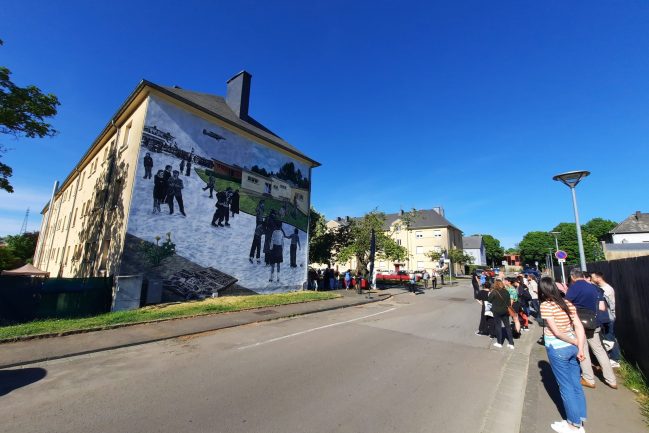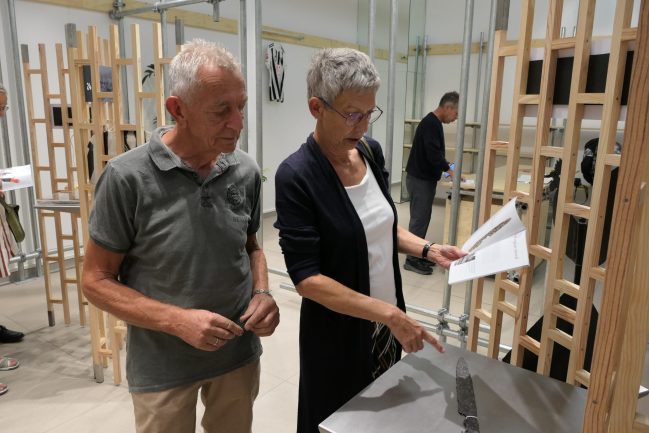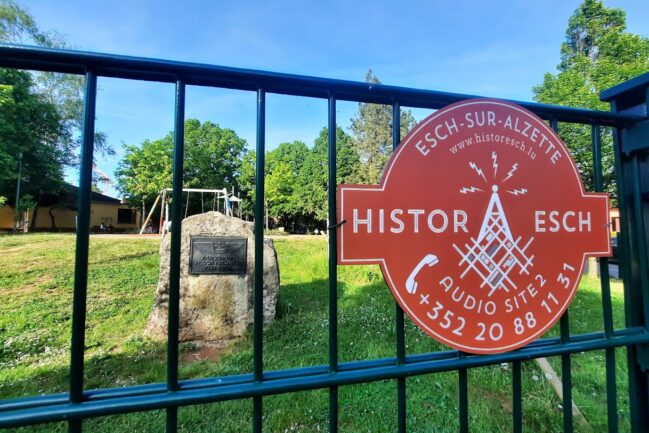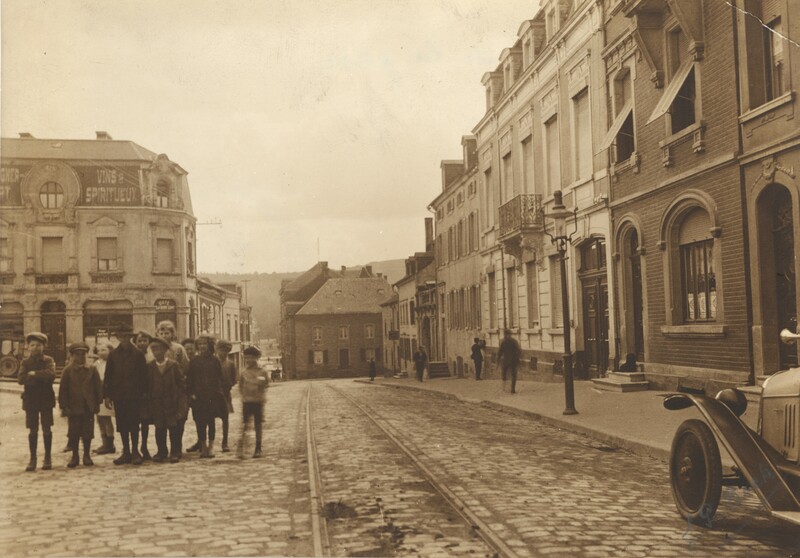Entschëllegt, dëse Guide ass nëmmen op Englesch verfügbar.
HistorEsch
Public History Activities in the city of Esch-sur-Alzette
HistorEsch is the overarching name for a series of public engagement activities that were organized in 2021 and 2022 to actively involve the residents of the city Esch-sur-Alzette in the narration of their cities’ history. Using various methods of engagement, the public learned about the history of the city through art (fresco), stories (audiotour) or objects (exhibition).
The lessons learned from the HistorEsch project inspired the Historesch Gesinn platform, which aims to promote public history beyond the scope of Esch-sur-Alzette.
Team
Project leader Thomas Cauvin
Project coordinator Joëlla van Donkersgoed
In collaboration with
Archives de la Ville d’Esch-sur-Alzette
HistorEsch successfully engaged the public in a dialogue to place personal memories and objects within a larger historical understanding of the past. Using tools such as crowdsourcing (digital and analog), community workshops and the active Facebook-group FL’ESCH Back, user-generated information inspired the production of a fresco (ArtistEsch), a multilingual oral history audio-tour and the “HistorEsch: Histories of Esch told in 25 objects” participatory exhibition.
The timing of this project was opportune with the cities’ status of 2022 European Capital of Culture, which offered opportunities to collaborate and share resources with the municipal cultural organization Nuit de la Culture. The public history activities contributed to the inclusion of unheard perspectives in the presentation of the cities’ history to a wider public. Our projects took place in non-traditional spaces in the city, to bring history where the people are. As such, the presentation of history and the inclusion of their own histories resulted in a practice that truly resonates with the society.
ArtistESCH
The urban art-project ArtistESCH aimed to create an interdisciplinary approach to visualize historical stories and emotions, and to increase accessibility by implementing a project on the public street. Together with our partners, the Nuit de la Culture and Kulturfabrik, we opened up the design and decision-making as much as possible to public input.
The resulting fresco is thus a collaborative product at the end of a series of community events, crowdsourcing and peer-review. As an artistic practice, the fresco was able to intertwine visual historical sources, oral histories, and artistic representation into one coherent design.

Esch in 25 objects
Within a year time, we co-created with local residents an exhibition on the history of Esch-sur-Alzette. After crowdsourcing photographs of personal objects related to the cities’ history, citizen historians categorized objects into 4 groups and the public voted for the top 25 items for display. Instead of fixed panels, visitors explored the exhibition freely with a catalog co-written by citizen historians, locals, and academic scholars. Titled “HistorEsch: Histories of Esch told in 25 objects,” the exhibition attracted 700 visitors over 3 weeks on Esch’s main shopping street, offering accessible stories and objects for all.

HearHere
History is often based upon archival material that is produced by the elite, while marginalized groups retain their history through other means such as oral history. Especially when dealing with topics in social history, these testimonies are crucial in reconstructing the past and teaching the public about its significance. Our audio-tour was developed in collaboration with a North American project called HearHere, who developed a method to insert personal testimonies in the street through a dial-in phone system. Our implementation was developed in four languages, to accommodate the multilingual community of Esch-sur-Alzette.

Fl’ESCH Back
To learn about current public history activities in Esch-sur-Alzette, see our Fl’ESCH Back research page.
